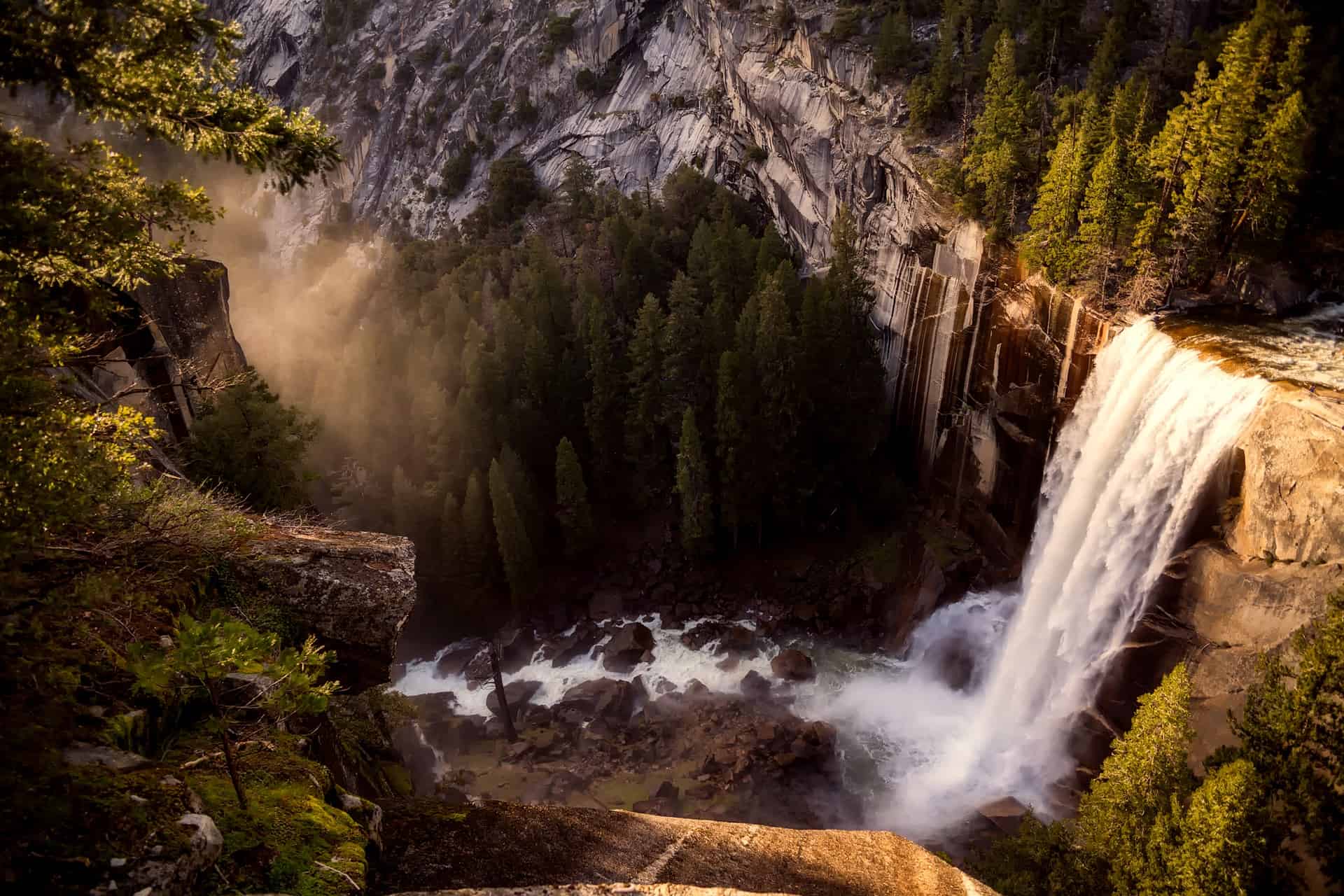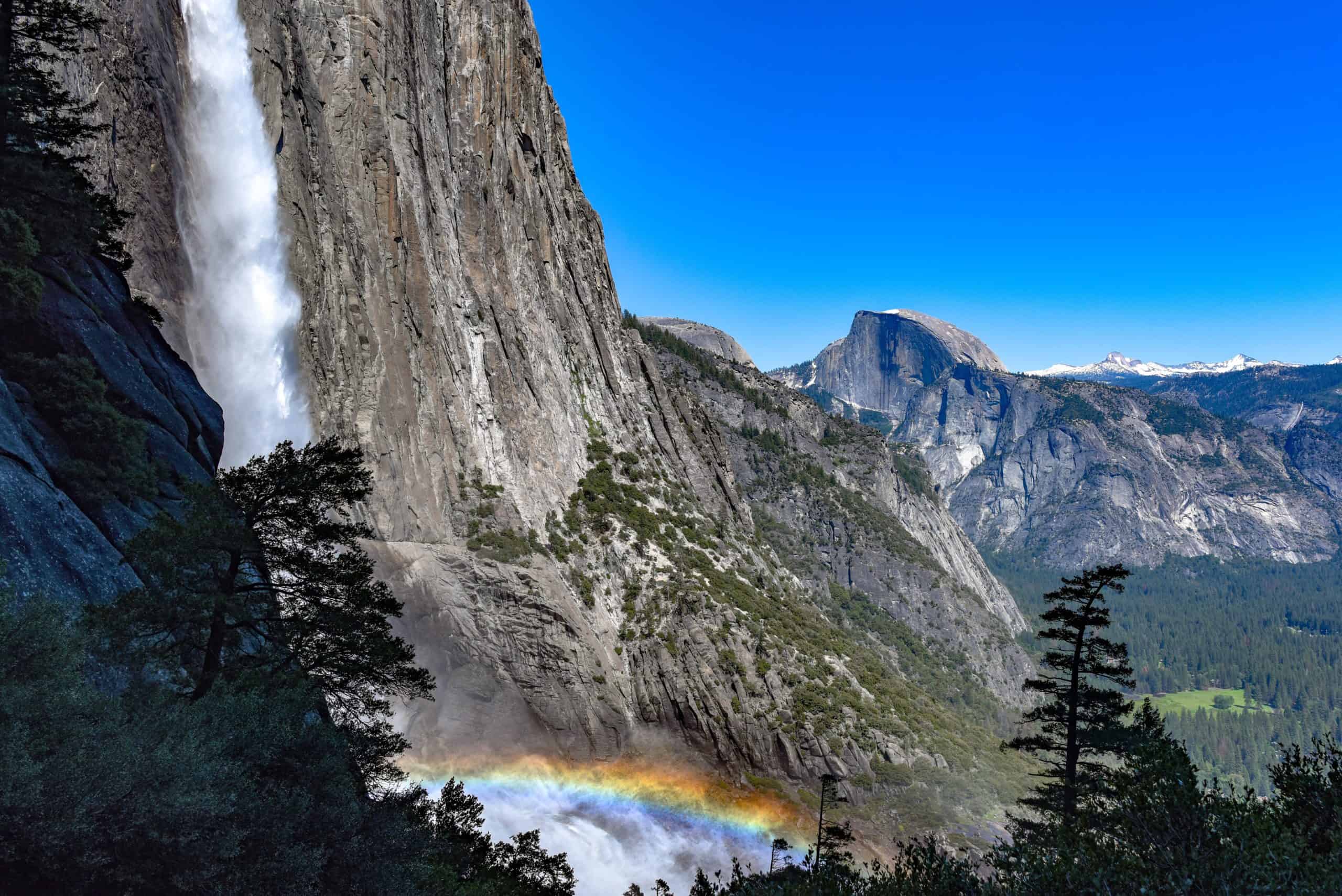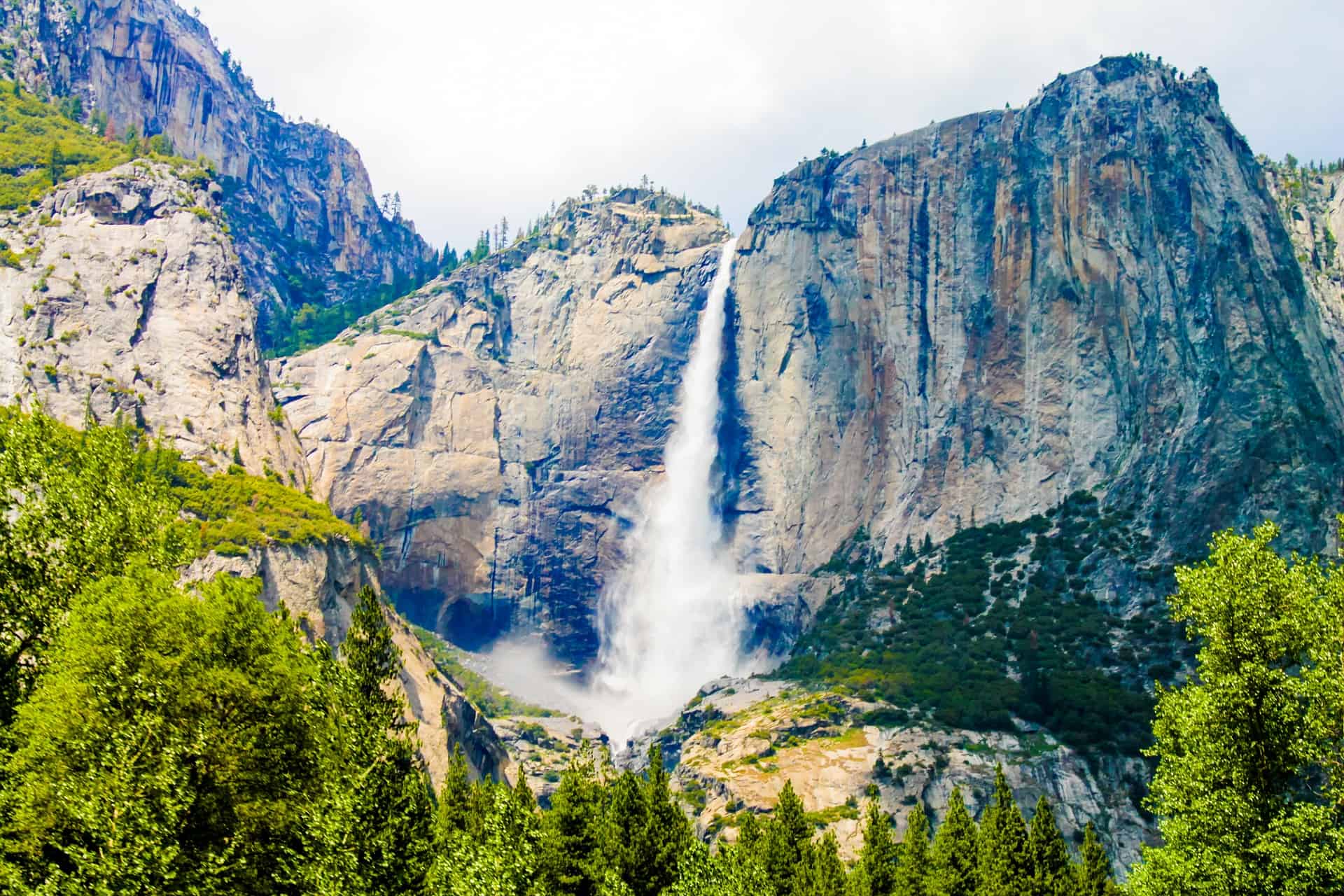National Parks are known for their waterfalls for the flora and fauna that cover their expansive landscapes. Waterfalls are a refreshing sight that encourages travelers to either stare at them in awe or dance in their showers.
But, which national park has the tallest waterfall? The tallest waterfall in a national park is Yosemite Falls, standing at 2,425 feet. It is also the country’s highest waterfall, and it is located in California’s Sierra Nevada. The waterfall consists of an Upper section, the Middle Cascades, and the Lower Yosemite Fall, with the water flow being strongest in the Spring and Early Summer when the snow melts.
Yosemite Falls isn’t just another waterfall. It has so many interesting aspects, not just how it was formed but the various sections that make up its structure and how it changes with each season. Keep reading, and you will understand why the 4.3 million people that visit Yosemite National Park are drawn to it.
The Sections of Yosemite Falls

According to Wikipedia, the waterfall consists of three sections, namely:
Upper Yosemite Fall
This is the most impressive portion of the waterfall because it spans 1,430 feet. The entire first half of the waterfall is the Upper Yosemite Fall. You can reach either the top or the base of this section by following trails from inside and outside the valley.
Middle Cascades
The Middle Cascades, which are 675 feet, don’t get as much love as they deserve. But you can’t blame tourists for ignoring them. They are crammed into a narrow section that the public cannot access with ease.
Lower Yosemite Fall
This section, which is 320 feet, is the easiest to access, which is why it attracts so many people. Don’t be quick to rush over to the plunge pool at the base, as the surfaces are slippery.
How Was Yosemite Falls Formed?
Yosemite isn’t just the tallest waterfall in a National Park. It is also stunning. Just look at the video below, which shows the rainbow mist rolling off the rocks. It is a truly magnificent sight.
Scientists have a basic understanding of the process that led to the waterfall’s formation:
Britannica places the blame on hanging tributary valleys. They did not erode as quickly as Yosemite Valley (which was carved by glaciers and rivers). As a result, they were eventually left hanging above the Yosemite valley.
The waterfall formed because of the creeks which tumbled over the edges of these tributary valleys into the Yosemite valley, eventually making their way to the Merced River.
When Is the Best Time to Visit Yosemite Falls?
The Fresno Bee encourages you to visit the waterfall in May. The water flow is most likely at its highest during this month. As was noted above, the waterfall is fed by snow. Snow accumulates in the winter, eventually melting during spring and early summer, strengthening the flow.
The water flow is at its strongest during spring. The exact week and month will vary. Sometimes, the waterfall surprises visitors by flowing even more vigorously in June. However, this also means that Yosemite eventually dries up.
Once all the snow has melted, the water will stop flowing. This can happen in the middle or at the end of summer. For climbers, this is a good thing because they have some dry surfaces they can use to scale some of the more difficult sections of the waterfall.
You may also like: A Complete Guide to Camping in Yosemite
How to See the Tallest Waterfall in a National Park?

World of Waterfalls has a few ideas that you can use if you have no idea how to see or even reach the Yosemite Falls during your visit to Yosemite National Park:
- The Base of the Lower Falls
Every tourist that doesn’t want to strain their body runs to the base of the Lower Falls. If you follow the paved walkway from Yosemite Lodge, it will give you a decent view of the waterfall. You can stop at the footbridge if the misty air doesn’t bother you.
At first, you can see the entire waterfall. But if you keep advancing, your view will begin to narrow until all you can see is the lower section. Because this journey is so easy, the walkway is often crowded. - The Top of the Upper Falls
This hike starts behind Camp 4. You have to climb for 1.2 miles to reach the Columbia Point Lookout before taking a moment to admire Sentinel Falls below. If you choose to continue (this is a good point to turn back if you are too tired), you must follow a trail that will lead you over an unstable sandy surface that will make your journey much harder.
The trail will eventually turn, bringing you closer to the upper section of the waterfall while also allowing you to view the Middle Cascades. If you continue over switchbacks and granite steps, you will eventually find some signposts to point you towards the top. This is a challenging hike, so you’ll need a lot of water. - The Swinging Bridge
From the parking at signpost V17, you can walk to the swinging bridge, as it is a short distance away. You may find some people playing in the shallow part of the river near the bridge. - Sentinel Dome
If you can get to the summit of the Sentinel Dome, you will see the entire waterfall. This is one of the easier journeys because it is only a mile long. You can also see into the ravines from this vantage point.
Some people might prefer the solitude that Taft Point offers. The national park has such an exciting landscape that you will be spoiled for choice regarding where you can see Yosemite Falls from.
Conclusion
Yosemite Falls is the tallest waterfall in a national park in the United States and is such an alluring attraction. It is open all year, which means that you have plenty of opportunities to see it. Naturally, most people want to observe it during spring when the water is flowing. However, the waterfall has a lot to offer in the summer when the water dries up and winter when the snow takes over.

